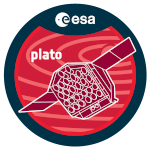The detection of exoplanets and low-mass stars around eclipsing binaries is the major goal of the Solaris network maintained by the Nicolaus Copernicus Astronomical Center (NCAC, Poland). Solaris consists of a network of four autonomous observatories located in the Republic of South Africa, Australia, and Argentina. The Solaris network aims to detect circumbinary objects on long-period orbits, otherwise inaccessible with current space telescopes, using the eclipse timing variation (ETV) method. This method is based on the detection of periodic variations of the mid-eclipse times through the light-traveltime effect (LTTE) caused by a circumbinary companion. In this talk, I will present the case of RX Gru, a solar-type eclipsing binary for which we detected a brown dwarf companion in a 24-yr orbit. This detection was made possible by our long-term monitoring of the system with Solaris and by using the SuperWASP and TESS photometry.

 PDF version
PDF version
